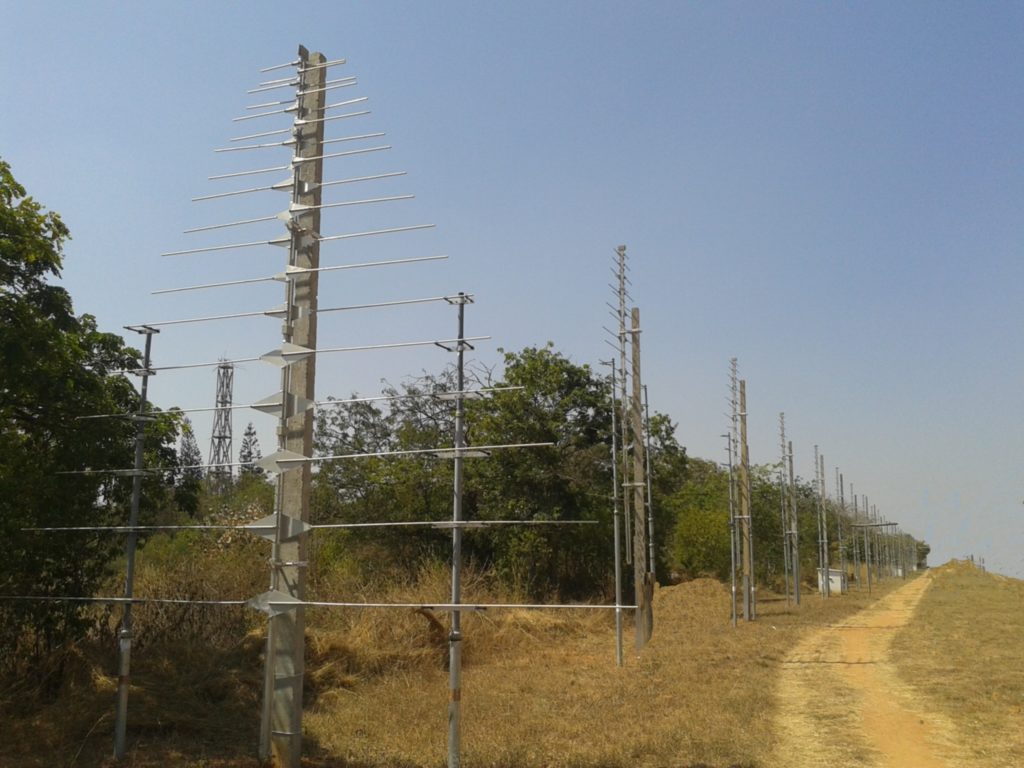Instrumentation:
Primarily, I work in Radio Instrumentation and Observational Solar Radio Astrophysics. I am interested in building/developing radio telescopes and related instrumentation to observe the Solar Corona and other celestial objects at low-frequencies.
Gauribidanur Radio Interferometric Polarimeter:
As a part of my Ph.D., we build a radio interferometric polarimeter (Gauribidanur Radio Interferometric Polarimeter, GRIP) at Gauribidanur Observatory, operated by Indian Institute of Astrophysics and Raman Research Institute located 100 km north of Bangalore, India. The array consists of 40 log-periodic dipole antennas that operate from 30 -150 MHz. After the successful installation of GRIP, we have been observing radio bursts from the solar corona in Stokes I and V regularly. We also observe strong radio sources like Sagittarius-A, Cassiopeia-A, Cygnus-A, Virgo-A, Taurus-A etc for the calibration. The data analysis pipeline of the polarimetric data has been carried out.

Gauribidanur Radio Polarimeter, India.
Cross Polarized Log Periodic Dipole Antenna:
Also, I involved in the designing and development of the Cross-Polarized Log-Periodic Dipole (CLPD) Antenna with low cross talk levels. Using the CLPDs we build the two-element radio interferometric polarimeter and carried out the observations of Noise Storms from the solar corona in Stokes I and V modes.
e-CALLISTO Spectrometer at IISER Pune:
We installed a Callisto spectrometer at IISER Pune and carrying out the observations of the Sun every day since September 2015. The radio spectrometer is a part of an e-CALLISTO network which is a worldwide network to monitor the radio emissions/bursts 24 hours a day.
Scientific Research:
Solar Radio Bursts:
I am very interested in understanding various types of solar radio bursts – Noise storms or Type I bursts, fast drifting Type III bursts, slow drifting type II bursts, Broadband Type IV continuum bursts, and so on. Mainly I am interested in their polarization properties and therefore the magnetic field associated with them in the solar corona as magnetic fields are key in understanding various mysteries of the solar corona and at present, there are no direct methods to estimate it.
Density Turbulence in the Solar Corona and Solar Wind:
At IISER Pune, I have been working on to study the density turbulence in the extended solar corona and solar wind using radio angular broadening observations. When the point-like radio sources are observed through the foreground solar wind, it experiences angular broadening and therefore decrements in flux density of the source. Using such observations we measured the structure-function and therefore the amplitude of density turbulence, density modulation index, turbulent heating rate and dissipation scales, etc. We have reported the way these turbulent parameters vary with heliocentric distance and the solar cycle. For this study, we make use of the data obtained using Gauribidanur Radioheliograph, Gaint Meter wave Radio Telescope, and Very Large Array.